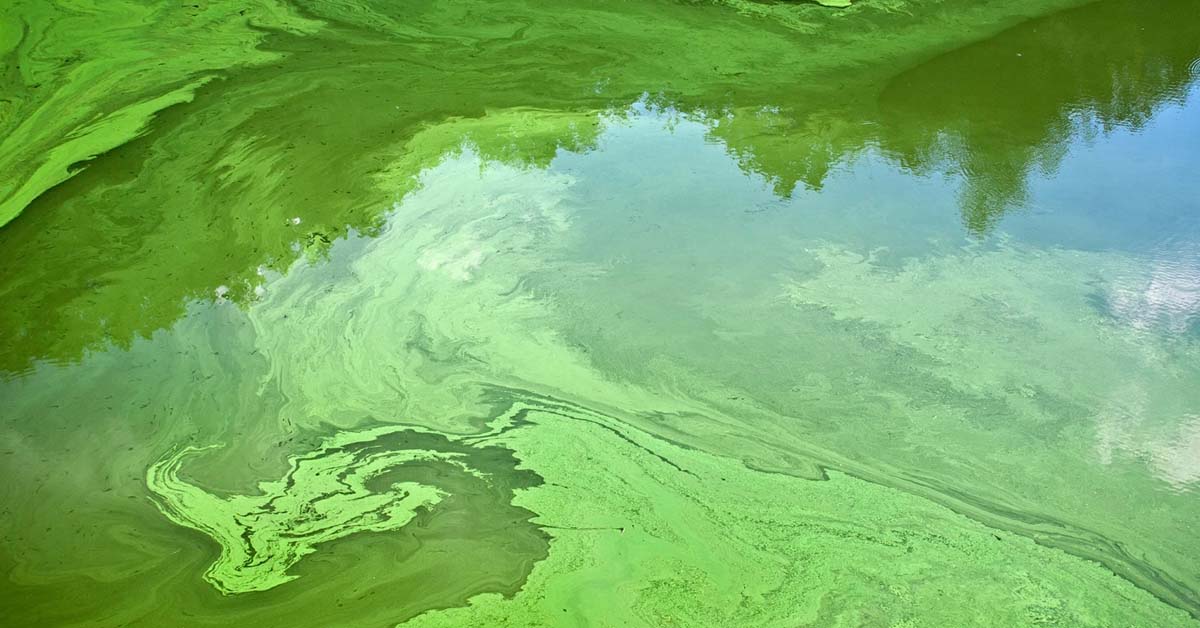Alberta Health Services has issued a public health advisory following the detection of a blue-green algae (cyanobacteria) bloom in areas of Matchayaw (Devil's) Lake. Please review the AHS recommendations below.
Residents living near the shores as well as visitors to the area, are advised to take the following precautions:
-
Avoid all contact with blue-green algae (cyanobacteria) blooms. If contact occurs, wash with tap water as soon as possible.
-
Do not swim or wade, or allow your pets to swim or wade in any areas where blue-green algae (cyanobacteria) is visible.
-
Do not feed whole fish or fish trimmings from this lake to your pets.
-
Consider limiting human consumption of whole fish and fish trimmings from this lake, as it is known that fish may store toxins in their liver. (People can safely consume fish fillets from this lake).
-
Do not use water contaminated with cyanobacteria to water edible plants. This is particularly important for plants with edible parts exposed to the ground surface (such as cabbage, lettuce, tomatoes, and other salad vegetables).
As always, visitors and residents are reminded to never drink or cook with untreated water directly from any recreational body of water, including Matchayaw (Devil's) Lake, at any time. Boiling of this water will not remove the toxins produced by blue-green algae. An alternate source of drinking water should also be provided for pets and livestock while this advisory is active.
Cyanobacteria is naturally occurring and often becomes visible when weather conditions are calm. Appearing like scum, grass clippings, fuzz or globs on the surface of water, blue-green algae can be blue-green, greenish-brown, brown, and/or pinkish-red, and often smells musty or grassy.
People who come in contact with visible blue-green algae or who ingest water containing blue-green algae may experience skin irritation, rash, sore throat, sore red eyes, swollen lips, fever, nausea and vomiting and/or diarrhea. Symptoms usually appear within one to three hours and resolve in one to two days. Symptoms in children are often more pronounced; however, all humans are at risk of these symptoms. Exposure to the bacteria may be fatal to pets.
Weather and wind conditions can cause algae blooms to move from one location in the lake to another. Due to this, the advisory will remain in effect for Matchayaw (Devil's) Lake until further notice.
If you suspect a problem related to blue-green algae or if you require further information on health concerns and blue-green algae, please call Health Link at 811. Additional information is also available online at www.ahs.ca/bga.
Please note that areas of these lakes in which the blue-green algae bloom is NOT visible can still be used for recreational purposes, even while this blue-green algae Health Advisory is in place.
Prior advisory posted July 12, 2023:
A blue-green algae (cyanobacteria) bloom has been identified in Nakamun Lake.
Alberta Health Services has issued a public health advisory following the detection of a blue-green algae (cyanobacteria) bloom in areas of Lac Ste. Anne.
This advisory remains in effect.
Prior advisory posted July 5, 2023:
A blue-green algae (cyanobacteria) bloom has been identified in Lac Ste. Anne.
Alberta Health Services has issued a public health advisory following the detection of a blue-green algae (cyanobacteria) bloom in areas of Lac Ste. Anne.
This advisory remains in effect.
Prior advisory posted June 28, 2023:
A blue-green algae (cyanobacteria) bloom has been identified in Isle Lake.
Alberta Health Services has issued a public health advisory following the detection of a blue-green algae (cyanobacteria) bloom in areas of Isle Lake.
This advisory remains in effect.
Prior advisory posted June 22, 2023:
A blue-green algae (cyanobacteria) bloom has been identified in Lessard Lake.
Alberta Health Services has issued a public health advisory following the detection of a blue-green algae (cyanobacteria) bloom in areas of Lessard Lake.
This advisory remains in effect.








